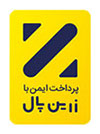When discussing the language skills of children in multilingual families, you occasionally come across the situation where a child has learnt to understand a language, but is unable (or unwilling) to speak it. Quite often you will find this described as passive bilingualism – I have used this expression myself, until Professor Grosjean pointed out to me that it is misleading and gives the wrong impression. The correct term is receptive bilingualism.
Understanding a language is anything but a passive process
To be able to understand what someone says to you, your brain has had to do a lot of preparation work and it has to stay highly alert while the discussion is ongoing. It picks up and processes the sound impulses and turns these random sequences of sounds into something we can comprehend and put into context. It does all this in a matter of milliseconds.
How does receptive bilingualism occur?
It is sometimes the case that children in multilingual families learn the family languages and happily speak them when they are small, but then something slowly changes and in their teens the children no longer feel confident in using their minority language. This can happen very gradually, even without the parents really realising it.
Parents have told me that one day they just noticed that the majority language had crept in as the main language between them and the children, and that only the parents spoke the minority language between them. When the parents tried to change the situation, they were met by resistance from the children and gave up. The children did not feel motivated in picking the language up again.
The crucial phase for maintaining a minority language
The crucial phase seems to be when kids start school and spend more time with their peers and get more exposure to the majority language of the community and get used to it as their main language of communication.
This is the time when it is important for parents to stay alert and be persistent (and consistent) and continue speaking the languages they have used with their children since they were small. At this point children need a lot of support from their parents to ensure that they will retain their ability to communicate in the family languages. It might not always be easy, but it will pay off and everyone will be pleased later in life that they made the effort.
Why receptive bilingualism can be something highly positive
The phrase passive bilingualism comes with a baggage of negative connotations. If a child does not get enough interaction in one of the family languages, the language can change from being actively used to being only understood. Hence, I suppose, the use of the word “passive” to describe it. It is however important to emphasise that understanding a language is significantly better than not having any knowledge at all of it!
If this has happened in your family, or to yourself, do keep in mind that a receptive language skill can be turned into a “productive” one. I experienced this myself years ago, when during a visit to India, I convinced myself to make use of the Punjabi skills I had picked up by listening to my daughter speaking it with her father and start speaking, little by little. I did not stay long enough in India to become anywhere near fluent, but I was able to make myself understood. I was able to communicate the basics.
With enough motivation and opportunity to use the language, it can be revived!
May the peace and power be with you

 Persian
Persian  English
English  Arabic
Arabic 


